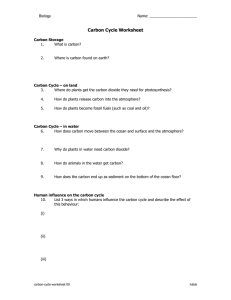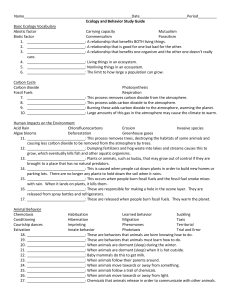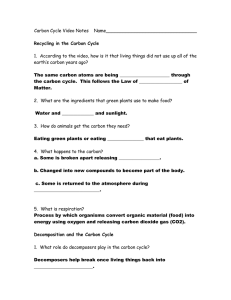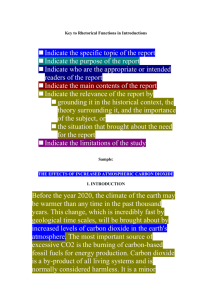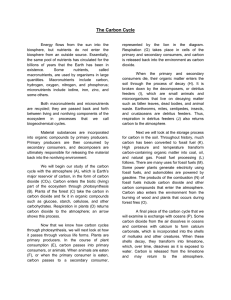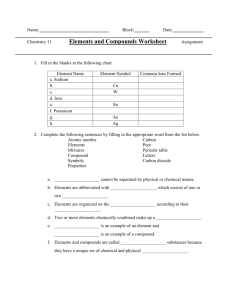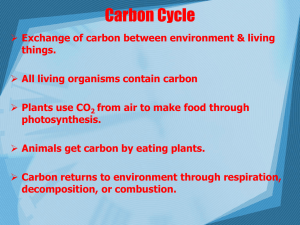The Carbon Cycle Introduction
advertisement
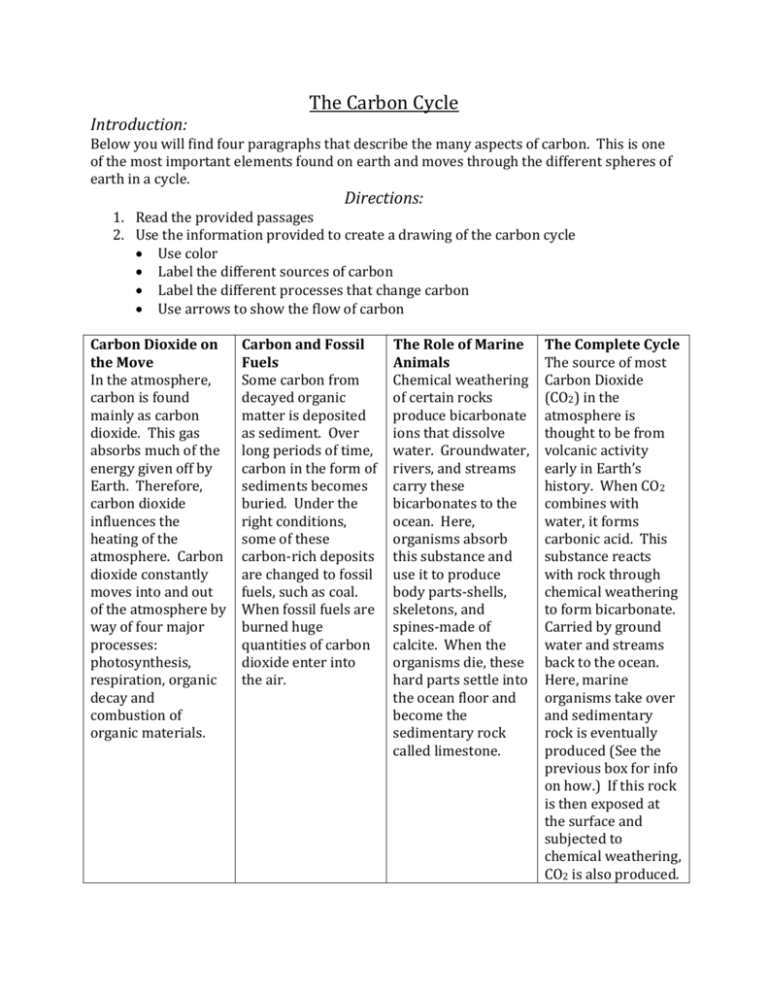
Introduction: The Carbon Cycle Below you will find four paragraphs that describe the many aspects of carbon. This is one of the most important elements found on earth and moves through the different spheres of earth in a cycle. Directions: 1. Read the provided passages 2. Use the information provided to create a drawing of the carbon cycle Use color Label the different sources of carbon Label the different processes that change carbon Use arrows to show the flow of carbon Carbon Dioxide on the Move In the atmosphere, carbon is found mainly as carbon dioxide. This gas absorbs much of the energy given off by Earth. Therefore, carbon dioxide influences the heating of the atmosphere. Carbon dioxide constantly moves into and out of the atmosphere by way of four major processes: photosynthesis, respiration, organic decay and combustion of organic materials. Carbon and Fossil Fuels Some carbon from decayed organic matter is deposited as sediment. Over long periods of time, carbon in the form of sediments becomes buried. Under the right conditions, some of these carbon-rich deposits are changed to fossil fuels, such as coal. When fossil fuels are burned huge quantities of carbon dioxide enter into the air. The Role of Marine Animals Chemical weathering of certain rocks produce bicarbonate ions that dissolve water. Groundwater, rivers, and streams carry these bicarbonates to the ocean. Here, organisms absorb this substance and use it to produce body parts-shells, skeletons, and spines-made of calcite. When the organisms die, these hard parts settle into the ocean floor and become the sedimentary rock called limestone. The Complete Cycle The source of most Carbon Dioxide (CO2) in the atmosphere is thought to be from volcanic activity early in Earth’s history. When CO2 combines with water, it forms carbonic acid. This substance reacts with rock through chemical weathering to form bicarbonate. Carried by ground water and streams back to the ocean. Here, marine organisms take over and sedimentary rock is eventually produced (See the previous box for info on how.) If this rock is then exposed at the surface and subjected to chemical weathering, CO2 is also produced.
